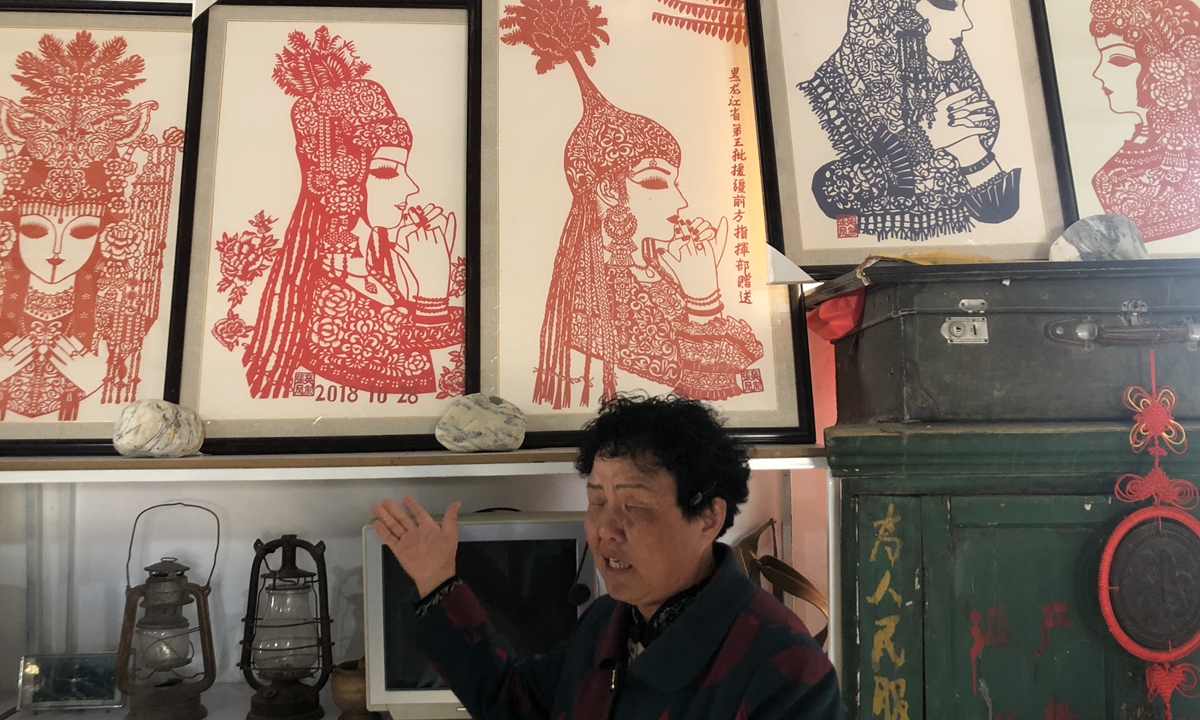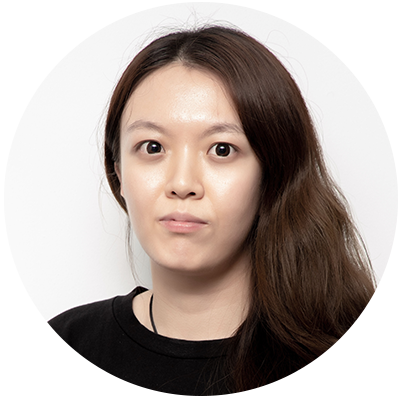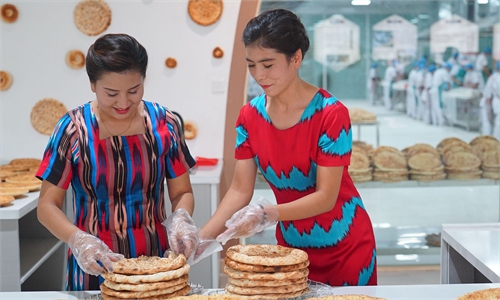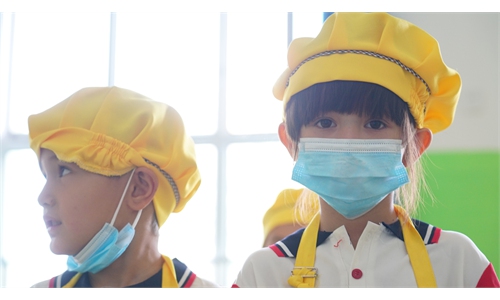
Li Hongxiu Photo: Ji Yuqiao/ GT
Li Hongxiu, 66, opened a private museum with other residents in Hongdun of Altay Prefecture, Northwest China's Xinjiang Uygur Autonomous Region, displaying memories about moving stories of ethnic unity among local residents of multiple ethnic backgrounds. It also became one of their sources of income.
The museum is located in the neighborhood where Li lives in Hongdun. Its history can be traced back to the 1860s when Li's predecessors, more than 40 Han families, arrived in the remote town from other provinces like North China's Shanxi Province and Northwest China's Gansu Province.
They have been called Huerjia.
The name is a phonetic translation of khorzha, which means "settlement" in the Kazakh language.
Since living in the frontier town alongside Mongolian and Kazakh nomads on the northern bank of the Khran River, the Han people learned how to get along with different ethnic communities. One local resident who sang a Kazakh song told the Global Times that they can speak Kazakh and Mongolian languages since childhood as they played with friends from different ethnic groups every day.
The Huerjia have grown, from over 40 families to more than 3,000 people after marrying with different ethnicities like Kazakh and Uygur. In the neighborhood live different ethnic groups, including Han, Kazakh, Uygur and Mongolian.
Li's exhibition collects old objects and pictures of Huerjia, including television sets, oil lamps and musical instruments.
One old photo shows Li's father-in-law surnamed Cao. Li told the Global Times that Cao adopted three Kazakh orphans when their father, who was also Cao's good friend, passed away, even though his family was still poor.
Cao is not the only one in the family offering a hand to nomads. His son, also Li's husband, sponsored the education of a nomad Kazakh child.
"The kid went to find my husband for help and said he wanted to go to school, so my husband gave him financial aid. He was finally recruited by a medical school and his two daughters now study at college in Beijing," Li said.
The two daughters visited the exhibition when they went back to Xinjiang and learned how close the ties between different ethnic groups are.
The private museum displaying ethnic unity attracts visitors around the country, especially from Altay and Urumqi. Liu Min, the local first secretary, said that Li had to tell Huerjia's stories four times every day before the outbreak of COVID-19 epidemic for tourists.
Li added that she also explained their stories to foreign tourists who were impressed by the close relations among different ethnic groups in the neighborhood.
"We hold activities in the multi-ethnic neighborhood, like selecting best neighbor and a giant feast involving all households to maintain unity and close ties," Li said.
Now the private museum becomes one source of income for residents. They registered the brand "Huerjia" and are producing agricultural and other products such as strawberries for sales, bringing all households in the neighborhood far away from poverty. Li said that many visitors love the taste of these green foods.
Based on the museum and Huerjia culture, Li and other residents have developed farm tourism. One Kazakh woman who worked on a farm said that their income has increased to 6,000 yuan ($929) per month.



